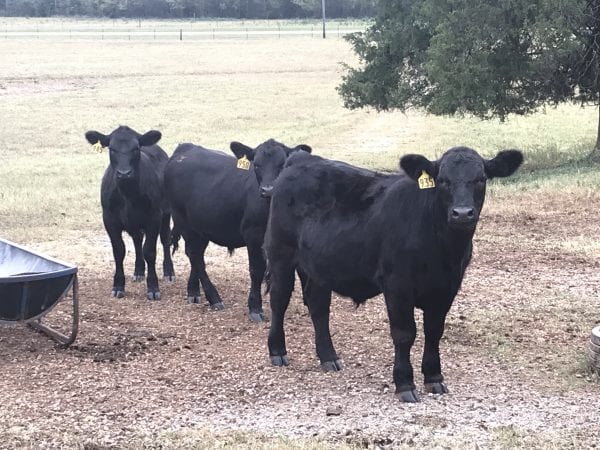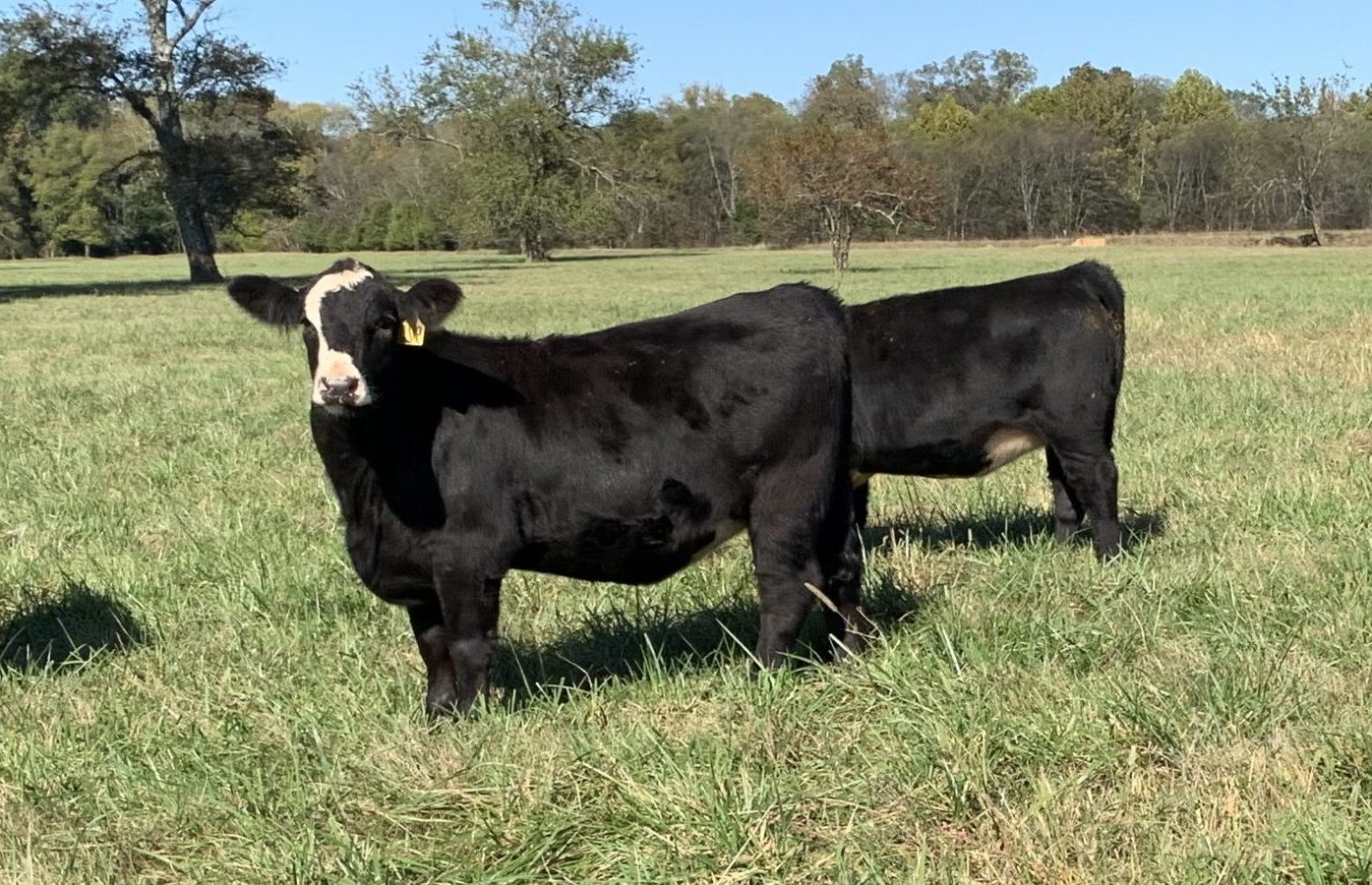Beef

Learn about preconditioning systems and how they can add value to the calves you produce and sell.
Producers have many marketing options such as selling calves immediately after weaning, but value can be added by putting calves through a preconditioning program to prepare them for the transition to later stages of production. Preconditioning typically consists of weaning calves, acclimating calves to feed bunks and water troughs, and upgrading their health status with vaccine and deworming protocols. Preconditioning reduces antibiotic use in beef production and improves the well-being of the cattle produced. Preconditioning programs usually require a minimum of 45 to 60 days and include defined health protocols. With a nutrition plan and marketing strategy, preconditioning programs should result in added weight gain and price premiums when the calves are sold.
Health
An essential part of any cattle management program is a good herd health program. Every cattle operation will have unique vaccination requirements based on individual herd goals and marketing strategies so the following guidelines for vaccinating preconditioned feeder cattle may not be applicable in all situations. Consulting with a veterinarian is important when designing herd health and vaccination protocols. These guidelines provide a starting point for conversation with a veterinarian to create a program that meets the needs of the farm. Depending on the producers’ marketing strategy, it would be beneficial to check on particular sale requirements.
Preconditioned feeder calves should generally be vaccinated against the following:
- IBR/BVDV/PI3/BRSV respiratory viruses (commonly available in a single vaccine)
- IBR = infectious bovine rhinotracheitis
- BVD = bovine viral diarrhea virus
- PI3 = parainfluenza3
- BRSV = bovine respiratory syncytial virus
- 7-way clostridial (blackleg)
- Mannheimia haemolytica (respiratory bacteria)
- Others: Pasteurella mutlocida and Histophilus somni (respiratory bacteria)
It is crucial to properly store and administer vaccines according to FDA-approved label directions, adhere to designated meat withdrawal times, booster primary vaccinations when recommended, and follow all other Beef Quality Assurance (BQA) guidelines. Additional best management practices include deworming, castrating, and dehorning cattle when appropriate and desired by buyers. This will add premiums to your calves. Implanting steers and non-replacement heifers with a growth promoting implant efficiently add weight to the calves during the preconditioning process and improve profitability of this enterprise.
When developing a plan, many producers think about these vaccinations, deworming, or other treatment strategies. However, it is important to remember that management practices that decrease handling and environmental stresses on cattle can also have an impact on herd health.
Nutrition
A good nutritional program supports the growth and performance of calves during the preconditioning period. During this time, calves undergo the transition from a forage and milk-based diet to a forage and concentrate-based diet. Training calves to use a feed bunk or watering trough should also be accomplished during the preconditioning period. Training can be accelerated by placing feed bunks with high-quality palatable hay top-dressed with supplement perpendicular to fence lines so that calves can easily find feed when they walk the fence. Calves should have between 1.5 to 2 feet of bunk space per head to prevent crowding. Water troughs should be clean, highly visible, and accessible. Small watering troughs may be more attractive to weaned calves because they can hear it being refilled quickly and the water supply may turn over more quickly in small troughs, keeping the water clean and cool.
 Rations for weaned calves can vary and may consist of grazed/conserved forages with or without supplemental feed. Collecting weights at weaning can help producers estimate weight gain goals during the preconditioning period and better formulate a suitable nutrition plan. It is important to have realistic expectations for weight gain during this time period. Weaned calves often lose weight during the first week postweaning due to the stress of the weaning process and acclimation of the rumen microbes to a new diet, but will slowly begin to regain weight within a 2- to 3-week period. Conduct a forage analysis to determine the type and level of additional feed supplementation needed to reach projected weight gain goals during the backgrounding period. Calves receiving supplemental feed should undergo an appropriate acclimation period to maintain proper rumen health. Begin by providing 0.5 percent body weight in feed and increase to the needed amount by 2 to 3 pounds every 3 days. Calves should also have free-choice access to grazed or conserved forage to support rumen health. Provide access to a free- choice mineral or mix mineral into feed supplements to help meet micronutrient requirements and provide more consistent mineral delivery in the diet.
Rations for weaned calves can vary and may consist of grazed/conserved forages with or without supplemental feed. Collecting weights at weaning can help producers estimate weight gain goals during the preconditioning period and better formulate a suitable nutrition plan. It is important to have realistic expectations for weight gain during this time period. Weaned calves often lose weight during the first week postweaning due to the stress of the weaning process and acclimation of the rumen microbes to a new diet, but will slowly begin to regain weight within a 2- to 3-week period. Conduct a forage analysis to determine the type and level of additional feed supplementation needed to reach projected weight gain goals during the backgrounding period. Calves receiving supplemental feed should undergo an appropriate acclimation period to maintain proper rumen health. Begin by providing 0.5 percent body weight in feed and increase to the needed amount by 2 to 3 pounds every 3 days. Calves should also have free-choice access to grazed or conserved forage to support rumen health. Provide access to a free- choice mineral or mix mineral into feed supplements to help meet micronutrient requirements and provide more consistent mineral delivery in the diet.
Nutrition plans should also be economically feasible to create value by cost-effectively adding weight to calves. Careful consideration should be taken to evaluate the weight gain goals, time constraints of the producer, forage quality, and feed options. The best way to evaluate the economic feasibility of feed programs is by considering the cost of gain vs. the value of gain. Cost of gain is calculated by dividing the total cost by the pounds gained. Value of gain must take into the different prices normally associated with different cattle weights, and in the case of preconditioning must consider any added premiums obtained. If the value of gain is less than the cost of gain, serious consideration should be given to alternative feeding options.
Marketing
Preconditioning calves is advantageous for the industry because it has been observed to help produce healthier, better performing calves that can adjust quicker and perform more efficiently during subsequent grazing and/or finishing phases of production. However, producers should carefully consider the effects preconditioning will have on his or her farm, particularly from an economic perspective. Preconditioning calves will cost a producer time and money and could present cash-flow issues. After considering the cost involved, producers can work to develop a marketing plan that will help increase potential profits gained from preconditioning calves.
Selling preconditioned calves without prior advertising or communication with a local livestock barn may not achieve the best possible return on investment. However, even without any added marketing efforts preconditioned feeder calves can have greater value when sold due to a reduction in shrink loss associated with transport from the farm to the point of sale when compared to calves that have undergone abrupt weaning. Generally, unweaned calves that are transported directly to the point of sale may have between 7 to 9 percent shrink loss, whereas preconditioned calves transported to the point of sale may have 5 percent shrink loss or less. Shrink loss is highly variable and dependent on time of feeding prior to transport, transportation stress, time spent in holding pens prior to sale, and environmental conditions, which influences calf body weight at the time of sale. Producers should consider revenue gained from diminished shrink in preconditioned calves when calculating their value of gain.
Where and/or how cattle are sold will have a direct impact on whether preconditioning will make or cost the producer money. Because of the expenses associated with preconditioning (feed, labor, land, machinery, initial weight loss, etc.), it is important to maximize the opportunity to recapture some of that investment. Feeder cattle are marketed several ways in Alabama, but the majority are marketed individually (or in small groups) through local livestock auctions. One of the keys to capturing the value of preconditioned feeder calves is to assemble groups of these calves to market collectively. This can be accomplished through traditional livestock auctions or by marketing through board sales or video/internet marketers. Assembling calves of one sex, similar size, and uniform quality into truckload sized groups (48,000 to 50,000 pounds of total weight) provides the greatest marketing potential. Even smaller groups (five head or more) marketed at local stockyards can command premium prices when sold together. Small cattle operations should consider working with neighbors and their local livestock auction to market preconditioned cattle together when large groups can be assembled. Communication with livestock auctions is key for small producers. Traditional livestock auctions can work well if they have time to communicate with buyers and market the cattle prior to sale.
Retaining ownership through the feeding and finishing phase in the feedlot until harvest is another viable marketing option. Retained ownership normally requires truckload size groups of cattle to be transported to the feedlot. Small and medium sized cattle producers, again, should consider working with other operations to pool calves together to retain ownership or use programs such as the Alabama Pasture to Rail Program to do so. Retained ownership provides producers the opportunity to potentially add additional profits above and beyond those made during the preconditioning phase and realize the full profit potential from the genetic selection of their cattle. However, it also presents additional risks due to market volatility and health challenges in the feedlot.
Any of these marketing options are viable alternatives for Alabama producers, but not all present the same level of profit potential for producers that precondition their calves. Producers should evaluate cost of gain verses value of gain associated with a preconditioning program and make their production decisions based on that evaluation. By managing costs and marketing these value-added calves effectively, producers can maximize their potential profits and greatly increase their short- and long-term economic sustainability.
Summary
Many methods and inputs are used to precondition feeder calves and each producer will need to evaluate their preconditioning program to determine if it is profitable for their operation. Several significant economic factors to consider when determining whether to precondition feeder calves include available facilities and labor, genetic capability/performance, cost of feedstuffs, health inputs, death loss, shrink, and price premium for preconditioned feeder calves. Collectively these factors can add value to feeder calves. Research has documented that preconditioned feeder calves are worth more to cattle feeders and packers, as they have less risk for death loss, lower health and veterinary expenses, increased levels of performance, and improved carcass characteristics than non-preconditioned feeder calves sold at weaning. In summary, the economic value of preconditioning feeder calves depends largely on managing the added costs during this period and offsetting it by capturing a premium value for these animals.
Download a PDF of Preconditioning Systems and Management Practices for Beef Calves, ANR-2755.


